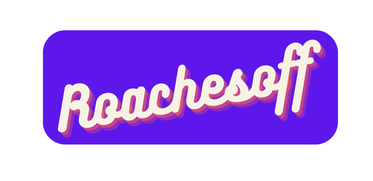Traditional budgeting methods—like the 50/30/20 rule or zero-based budgeting—have promised financial control for decades. But if they work so well, why do so many people still fail to stick to them? The issue lies less in people’s math skills and more in human behavior. This is precisely why financial education platforms like Dow Janes reviews consistently highlight how their approach integrates behavioral science into budgeting for lasting success. Dow Janes empowers women and beginners alike to embrace financial systems that are flexible, value-driven, and grounded in real-life behavior. Unlike rigid systems that expect users to act like robots, Dow Janes’ programs are built to align with how people think, feel, and spend. That’s why their platform has gained traction among those who have struggled with conventional budgeting rules and need a more innovative, psychology-first approach.
The Flaws of Conventional Budgeting Systems
Standard budgeting frameworks assume consistency: predictable income, fixed expenses, and logical choices. But life doesn’t follow a formula. One unplanned event—a car repair, medical bill, or spontaneous family trip—can derail even the most disciplined budget. The bigger issue? These systems overlook emotion. Whether it’s retail therapy after a stressful week or a celebratory dinner, most spending isn’t rooted in logic but in how we feel. According to a U.S. Bank study, only 41% of Americans use a budget, often because rigid systems feel unrealistic or punitive. Many give up after a few months, not because they’re incapable of budgeting, but because they’re using the wrong system for how their brain operates.
Behavioral Finance: The Missing Link in Budget Success
Behavioral finance explains how cognitive biases and emotional responses affect financial decisions. For example, mental accounting causes people to treat tax refunds differently than salaries, often blowing refunds on wants, not needs. Meanwhile, loss aversion makes people avoid cutting back, even when necessary, because loss feels more painful than gain feels good. A paper published by the National Bureau of Economic Research reveals that people are more likely to save when those actions tie into personal values or emotional rewards, like wanting to be a role model for their kids or securing peace of mind for the future. By recognizing that humans aren’t perfectly rational, budgeting systems can become more effective, flexible, and compassionate.
How Dow Janes Encourages Value-Based Planning
This is where Dow Janes truly stands out. The platform doesn’t just offer spreadsheets and numbers—it builds a foundation of mindset, motivation, and behavior. Their value-based budgeting approach flips the script by asking: What matters to you most? Then, it designs a financial plan around those values. Participants start by identifying their core priorities—saving for travel, paying off debt, or starting a business. Dow Janes teaches them to set up intentional categories that reflect those goals, rather than forcing spending into generic buckets.
The platform’s behavioral strategies include:
- Spending alignment: Ensuring your money supports your values, not just your bills.
- Automated savings: Removing the need for daily decisions, reducing emotional fatigue.
- Financial affirmations: Reframing money beliefs to build confidence and reduce shame.
Dow Janes also creates a community-driven learning environment, encouraging women to support one another and hold each other accountable. This social aspect—rarely present in budgeting apps—is one of the reasons Dow Janes reviews are filled with praise for the emotional and psychological shift the program provides.
Tech Tools That Leverage Psychology to Help You Budget
Behavioral design has influenced many of today’s most successful financial tools. Apps like YNAB (You Need A Budget) focus on intention by assigning every dollar a job and encouraging proactive, not reactive, spending. Another example is Qapital, which automates savings using customizable rules like “round up spare change” or “save $5 every time I skip takeout.” These tools create financial nudges that tap into natural behavior rather than fighting it. This practice, called choice architecture, is supported by research from Nobel laureate Richard Thaler. By structuring financial decisions in a way that subtly steers people toward better outcomes (like setting savings as a default), these platforms increase user success without demanding significant willpower.
What the Future Holds: Behavior-Centered Financial Literacy
Financial education is evolving. No longer focused solely on math or spreadsheets, modern programs now incorporate emotional intelligence, habit-building, and identity work. Dow Janes is among the leaders embracing this trend, helping users track spending and heal their relationship with money.
Expect more courses, tools, and apps that:
- Personalize content based on lifestyle and emotional triggers.
- Use gamification to build consistency and reward good habits.
- Focus on progress over perfection, reducing the shame cycle of failure.
Even financial advisors are shifting their approach. Instead of simply giving advice, many act as financial therapists—unpacking beliefs, patterns, and behaviors alongside clients. Behavioral finance is no longer a niche idea; it’s the future of financial well-being.
Conclusion
Budgeting isn’t just about numbers—it’s about people. When systems align with how our brains and emotions work, success becomes more accessible. Platforms like Dow Janes prove that anyone can gain financial clarity and control with the right behavioral tools. By embracing value-based, psychology-driven planning, we move beyond outdated rules and into a more compassionate, sustainable way of managing money.



